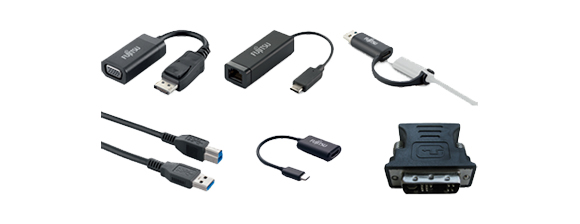Mastering OSPF, LSAs, and Network Topologies: A Comprehensive Guide for Cisco-Certified Network Engineers
In today's digital landscape, network engineers are required to have a solid foundation in routing protocols, network topologies, and configurations for specific vendors. Among the most sought-after skills are knowledge of OSPF (Open Shortest Path First), familiarity with different network topology models, and proficiency in Cisco courses. At UniNets, we provide intensive training to both prospective and experienced engineers to equip them with practical knowledge and hands-on experience.
Why Cisco Courses Matter for Network Engineers
Cisco continues to be a leader in network technologies and solutions, and their certifications—CCNA, CCNP, and CCIE—are globally recognized. These courses cover everything from simple network configuration to complex routing, switching, and security. Enrolling in Cisco-certified courses at UniNets equips engineers with hands-on experience on network simulators and actual Cisco equipment, making them enterprise-ready for certification exams.
Key Areas of Focus in Cisco Training
Our Cisco training courses at UniNets focus on several key areas:
- Routing protocols (e.g., OSPF, EIGRP, BGP)
- Network topology understanding
- VLANs, subnetting, and switching fundamentals
- Cisco IOS configurations
Mastery of OSPF and LSAs in Cisco Training
OSPF (Open Shortest Path First) is one of the most popular dynamic routing protocols utilized in enterprise networks. It is a link-state protocol based on LSAs (Link-State Advertisements) for routing and topology information exchange. Understanding OSPF LSA types is crucial for designing scalable and effective networks. Our training sessions include real-time packet captures and lab simulations to make you understand these concepts practically.

The different types of OSPF LSAs are:
- Type 1 – Router LSA: Details of interfaces and neighbors within an OSPF area.
- Type 2 – Network LSA: Generated by the Designated Router (DR) to define multi-access networks.
- Type 3 – Summary LSA: Exchanged by Area Border Routers (ABRs) to provide summaries of routes between areas.
- Type 4 – ASBR Summary LSA: Defines the position of Autonomous System Boundary Routers (ASBRs).
- Type 5 – External LSA: Announces external networks from other routing domains.
- Type 7 – NSSA External LSA: Applied in Not-So-Stubby Areas to bring in external routes with defined boundaries.
Networking and Topology: Fundamentals for Network Architects
Network topology is the physical or logical structure of a network. It is crucial for engineers to know when creating or debugging infrastructures. There are several topologies:

- Bus Topology
- Star Topology
- Mesh Topology
- Ring Topology
- Hybrid Topology
Each topology has its advantages and disadvantages based on the application scenario, network size, and performance requirements. While bus topology is not often employed in contemporary enterprise networks, it is a basic design explored in our Cisco training for theoretical purposes. It is simple and inexpensive on small installations but not highly scalable or reliable. We use bus topology diagrams at UniNets to illustrate its legacy value and compare it with more scalable designs such as star or mesh topologies.
Fortinet Training and Cisco Courses: Supporting Skills
While Cisco training emphasizes routing, switching, and enterprise networking, Fortinet training covers network security, firewall configurations, and secure routing protocols. Merging both skill sets provides engineers an advantage over competitors, particularly in positions that require expertise in secure OSPF configurations and the way OSPF LSAs work in security appliances such as FortiGate. Our Fortinet training at UniNets also involves OSPF integration and seeing networks topology from a security perspective—how to manage LSA propagation, route redistribution, and network segment security policies.

Applications of Topologies and OSPF in Real-World Scenarios
Here’s how you’ll use these skills practically:
- Design and configure routers using OSPF LSA types for efficient routing.
- Choose the right topology in networking depending on organizational needs.
- Analyze bus topology diagrams and modern topologies to improve network performance.
- Configure both Cisco and Fortinet devices for secure and redundant connectivity.
- Troubleshoot network convergence issues using LSA trace routes and database analysis.
Why Choose UniNets for Cisco and Fortinet Training?
At UniNets, we integrate certification-oriented learning with live networking problems. Our trained instructors lead you through live labs, case studies, and in-depth examination of OSPF LSAs, network architectures, and vendor-specific best practices. Key advantages are:

- Years of experience in Cisco/Fortinet certified instructors
- Access to live remote labs and GNS3/EVE-NG simulations
- In-depth OSPF LSA types and network design
- Hands-on configurations of Cisco routers and FortiGate firewalls
- Job role and certification-tailored training paths
Final Thoughts
The modern network engineer must be well-versed in both theory and hands-on configuration. By mastering OSPF, LSAs, and network topology design through Cisco courses at UniNets, you’ll be prepared to build and manage scalable, secure, and high-performance networks. From learning the basics of a bus topology diagram to setting up OSPF LSA types in multiple areas, our training makes you ready for the industry. Use it in combination with Fortinet training to get ahead in secure networking and firewall deployment.
This comprehensive guide explicitly dives into the intricate details of OSPF, LSAs (Link State Advertisements), and network topologies for Cisco-Certified Network Engineers. It provides a robust understanding foundation necessary to master these concepts in practice.
This thorough and engaging guide on Mastering OSPF, LSAs (Link State Advertisements), Network Topologies proves instrumental for aspiring Cisco-Certified Network Engineers by offering a comprehensive examination of their core concepts with practical examples to enhance understanding at each step.
This comprehensive guide masterfully delves into the fundamental concepts of OSPF, its LSAs (Link State Advertisements), and various network topologies for Cisco-Certified Network Engineers. It's an indispensable resource that ensures a solid grasp on implementing efficient routing protocols.
This comprehensive guide to Mastering OSPF, LSAs and Network Topologies provides a valuable resource for Cisco-Certified Network Engineers seeking an invaluable understanding ofessential concepts essentials required by advancing their skill sets.
This comprehensive guide, Mastering OSPF and LSAs for Cisco-Certified Network Engineers by [Author's Name], is a must read that successfully equips engineers with the tools necessary to navigate complex network topologies using open shortest path first (O SP) routing protocols.
This comprehensive guide not only expertly navigates the intricacies of OSPF, LSAs (Link State Advertisements) and network topologies but also serves as a must-have reference for Cisco Certified Network Engineers looking to solidify their mastery in today's complex routing systems.
This comprehensive guide, Mastering OSPF: LSAs and Network Topologies for Cisco-Certified Network Engineers provides an invaluable resource that is not only technically accurate but also readily accessible to those seeking practical knowledge on configuring advanced router settings.














